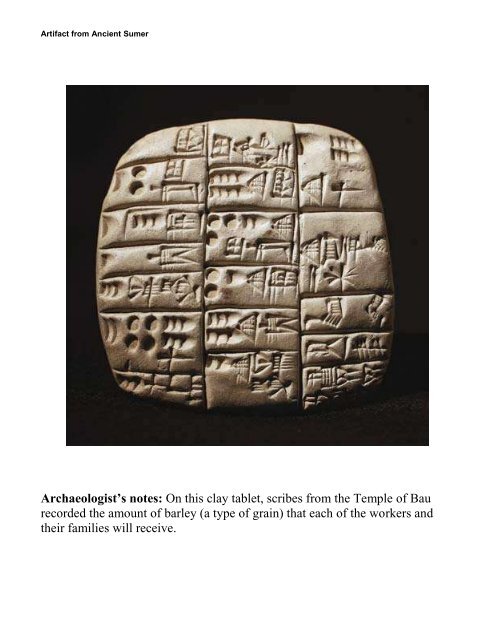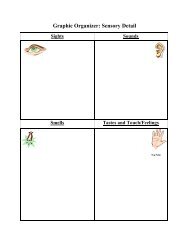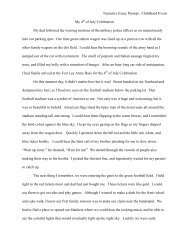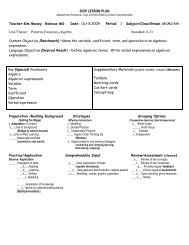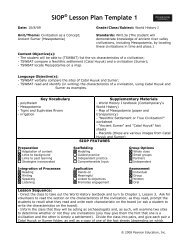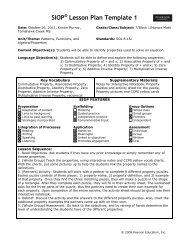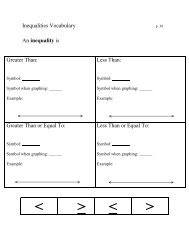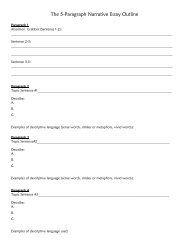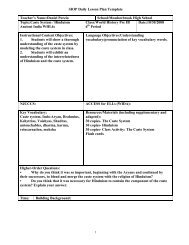Sumerian Artifacts - ACT-ESL
Sumerian Artifacts - ACT-ESL
Sumerian Artifacts - ACT-ESL
You also want an ePaper? Increase the reach of your titles
YUMPU automatically turns print PDFs into web optimized ePapers that Google loves.
Artifact from Ancient SumerArchaeologist’s notes: On this clay tablet, scribes from the Temple of Baurecorded the amount of barley (a type of grain) that each of the workers andtheir families will receive.
Artifact from Ancient SumerArchaeologist’s notes: These statues of a married couple were found in therubble of a religious shrine. The original statues had eyes made of shells andsemiprecious stones. They were probably left at the shrine as a gift to the gods.The sizes of these statues usually determined hierarchy (level of importance insociety). Likewise, a beard on a figure signified a man in a powerful position.
Artifact from Ancient SumerArchaeologist’s notes: This lyre—a stringed musical instrument—wasdecorated with gold and semiprecious stones. It was found in the tomb of a<strong>Sumerian</strong> queen. Royal musicians may have played this instrument to entertainthe queen and her court.
Artifact from Ancient SumerArchaeologist’s notes: This clay seal shows King Ur-Nammu (seated)appointing Hashhamer as one of his governors. The inscription on the sealsays, “Ur-Nammu, the mighty hero, king of Ur; Hashhamer, the governor ofIshkun-Sin, his servant.”This carved stone sealwas rolled across aslab of clay to createthe scene shownabove.
Artifact from Ancient SumerArchaeologist’s notes: This gold cup was created by <strong>Sumerian</strong> artisans,probably to be used at banquets. These banquets were generally for themembers of the upper classes of <strong>Sumerian</strong> society.
Artifact from Ancient SumerArchaeologist’s notes: This impression was made from a stone seal. It showstwo gods. One god has a hand in the shape of a scorpion. The other is using aplow.
Artifact from Ancient SumerArchaeologist’s notes: This small copper statue shows a <strong>Sumerian</strong> chariotbeing pulled by four donkeys. This kind of chariot was probably used by<strong>Sumerian</strong> soldiers.
Artifact from Ancient SumerArchaeologist’s notes: This bronze statue shows King Ur-Nammu carrying abasket of bricks on his head. This probably represents the fact that one of theking’s main responsibilities was to build and maintain the temples, even thoughhe didn’t actually do the work himself. The inscription around the body of thestatue records the restoration of a temple.


